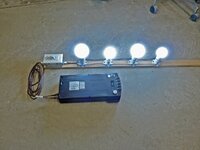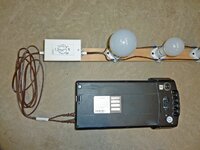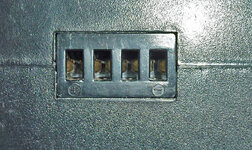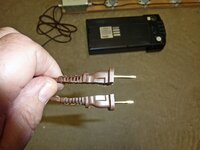I built this rig mainly to discharge my batteries for storage but it can also be used as a portable light source outdoors or inside during a power failure:
View attachment 73113 View attachment 73110
My batteries use a slot type connector which was easy to tap by cutting a cheap extension cord plug in half:
View attachment 73115 View attachment 73111 View attachment 73112
You would likely have to use a different method for your Rad battery though. My batteries have a built in switch & fuse. Keep in mind these would have to be added for batteries that don't have them.
When not in use, the rig hangs on a wall above the work bench:
View attachment 73114
To use household appliances, it would be a simple matter to wire up a 48V DC to 110V AC inverter such as this one:
View attachment 73116
Majorsine1000-48-2U, DC to AC power inverter, 48VDC to 120VAC, 1000VA and 800W, 2U rackmount.

www.majorpower.com
To charge electronic devices, you could also wire up this 48V DC to USB converter:
View attachment 73117
Buy SMAKN 12V 24V 36V 48V (8-50V) to 5V 3A 15W DC/DC Buck Power Converter Voltage Step Dowm Power Supply MICRO-USB output Waterproof: Power Converters - Amazon.com ✓ FREE DELIVERY possible on eligible purchases
www.amazon.com








